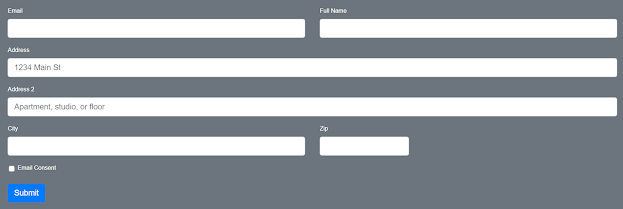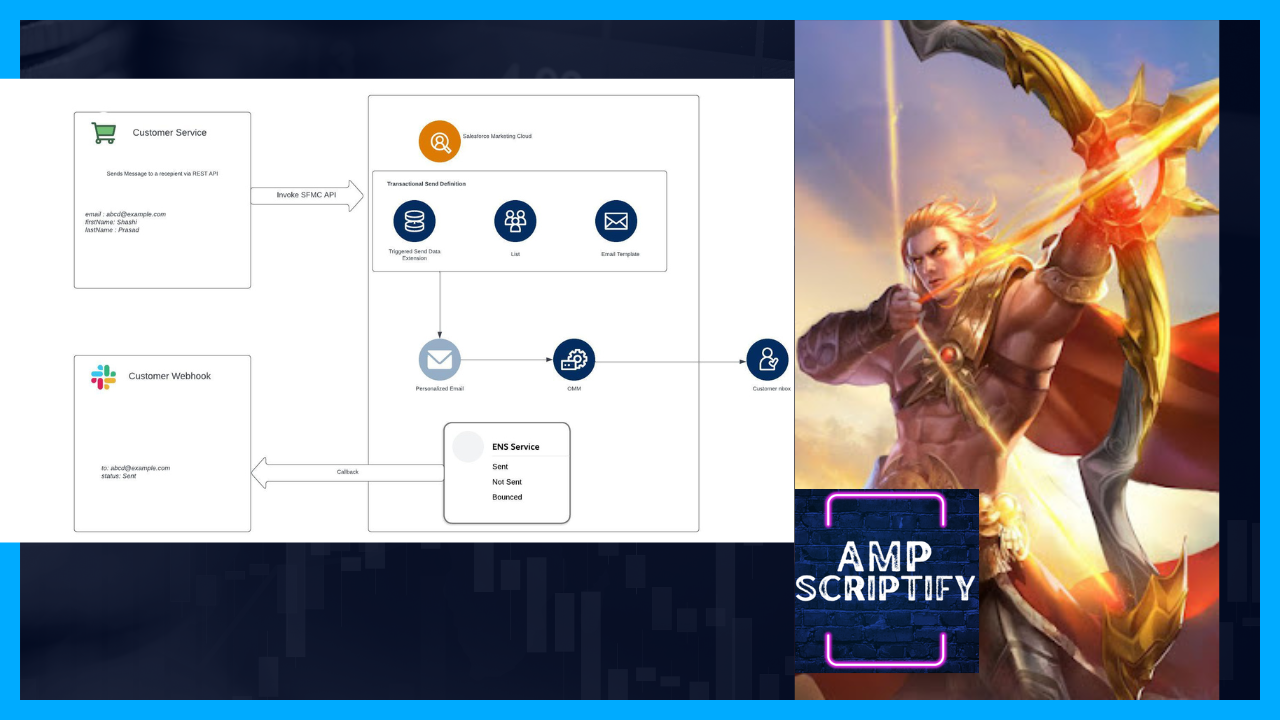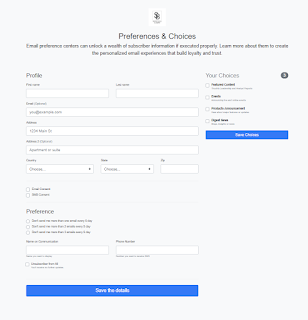Content Matrix Framework
Key Components of the Content Matrix Framework
The "Content Matrix framework" is an approach where a standardized base email template is created for all emails, while the email contents are stored in a data extension. Each row in the data extension represents unique email content. When sending out email campaigns, the base template remains consistent, and the content is dynamically populated based on the specific email campaign and recipient data. This approach streamlines email design and personalization, ensuring a consistent brand identity while allowing for customized content delivery. Please note that the specific term "Content Matrix framework" may not be widely recognized, and its usage could be organization-specific or industry-specific.
- Content Matrix Creation: The Content Matrix is a structured document or spreadsheet where marketers organize and categorize email content. This matrix typically includes rows and columns, with rows representing different email variations or sections (e.g., headlines, product recommendations, images), and columns specifying content for various audience segments, customer journeys, or personalization variables.
- Data Extensions: In SFMC, data extensions are used to store the email content provided in the Content Matrix. Each row in the matrix corresponds to a record in a data extension, and the columns in the matrix align with fields in the data extension. The data extension structure is predefined to accommodate the expected content variations.
- AMPscript: AMPscript is a scripting language native to SFMC that allows for dynamic content rendering. Marketers use AMPscript to retrieve data from the data extensions and dynamically insert it into email templates. This enables the creation of personalized and highly relevant email content.
Workflow of the Content Matrix Framework
- Content Matrix Creation: Marketers collaborate to populate the Content Matrix with content variations. For instance, one row may contain different subject lines for A/B testing, while another may have product recommendations tailored to specific customer segments.
- Data Extension Setup: A data extension is created in SFMC with predefined fields corresponding to the columns in the Content Matrix. Each row of the Content Matrix is then imported into the data extension, mapping the content to the appropriate fields.
- Email Template Design: Email templates are designed in SFMC's Content Builder. Rather than hardcoding content, placeholders or reference markers are added where dynamic content should be inserted. These placeholders are usually represented as AMPscript functions that will pull data from the data extension.
- Creating Content Blocks: To enhance the efficiency of the framework, content blocks can be created within the email templates. These content blocks serve as reusable sections of content, such as headers, footers, or product recommendations. Marketers design and define these content blocks in a modular fashion, making it easy to insert them into various templates. This step further streamlines the process and ensures consistency in branding and messaging.
- AMPscript Implementation: Within the email templates, AMPscript functions are used to fetch data from the data extension and insert it into the placeholders and content blocks. AMPscript can be as simple as retrieving a single data point, such as a personalized greeting, or more complex, like fetching an entire product catalog based on customer preferences.
- Email Deployment: Once email templates are populated with dynamic content and content blocks, they are scheduled for deployment. SFMC takes care of personalizing and rendering the content for each recipient based on the data stored in the data extension.
Benefits of the Content Matrix Framework
- Efficiency: By structuring content in a matrix format and utilizing content blocks, marketers can quickly adapt and test multiple variations of their emails while maintaining a consistent and modular approach.
- Consistency: The use of content blocks ensures that common elements like headers, footers, and product recommendations are consistent across all email campaigns.
- Personalization: AMPscript enables highly personalized and targeted email content, improving engagement and conversion rates.
- Scalability: This framework is scalable and adaptable to handle a large volume of email content, making it suitable for enterprises and businesses with complex email marketing needs.
Example: Newsletter
The email template has been enhanced for a more professional appearance. The header section adopts a sophisticated color scheme and employs clear typography for better readability. The 1-3 column layout showcases featured products. Each column features a distinct product with a large and bold heading, accompanied by visually appealing product images to highlight the products' key features and entice engagement. The cleaner typography and well-structured content make it easier for recipients to explore and learn more about each product. The footer section has been refined with cleaner typography, well-spaced links for "Unsubscribe," "Privacy Policy," and "Terms of Service," and it concludes with essential copyright information.
- Html layout
<!DOCTYPE html> <html lang="en"> <head> <meta charset="UTF-8"> <meta name="viewport" content="width=device-width, initial-scale=1.0"> <title>Your Professional Email</title> </head> <body style="margin: 0; padding: 0; background-color: #f7f7f7; font-family: Arial, sans-serif;"> <!-- Header Section with Hero Image --> <table align="center" bgcolor="#0052cc" width="100%" cellpadding="0" cellspacing="0" style="max-width: 600px; margin: 0 auto; color: #ffffff; font-size: 14px;"> <tr> <td style="padding: 20px; text-align: center;"> <img src="hero-image.jpg" alt="Hero Image" width="100%" style="display: block;"> <h1 style="font-size: 24px; margin: 10px 0;">Welcome to Our Newsletter</h1> <p style="font-size: 14px; margin: 10px 0;">Stay updated with our latest news and offers.</p> </td> </tr> </table> <!-- 1-3 Column Layout --> <table align="center" bgcolor="#ffffff" width="100%" cellpadding="0" cellspacing="0" style="max-width: 600px; margin: 20px auto;"> <tr> <td width="33.33%" valign="top"> <img src="column1-image.jpg" alt="Column 1 Image" width="100%" style="display: block;"> <h2 style="text-align: center; margin: 10px 0; font-size: 18px;">New Arrivals</h2> <p style="text-align: center; font-size: 14px;">Discover our latest products and trends.</p> </td> <td width="33.33%" valign="top"> <img src="column2-image.jpg" alt="Column 2 Image" width="100%" style="display: block;"> <h2 style="text-align: center; margin: 10px 0; font-size: 18px;">Exclusive Offers</h2> <p style="text-align: center; font-size: 14px;">Get access to special discounts and promotions.</p> </td> <td width="33.33%" valign="top"> <img src="column3-image.jpg" alt="Column 3 Image" width="100%" style="display: block;"> <h2 style="text-align: center; margin: 10px 0; font-size: 18px;">Stay Connected</h2> <p style="text-align: center; font-size: 14px;">Join us on social media for updates.</p> </td> </tr> </table> <!-- Footer Section --> <table align="center" bgcolor="#333333" width="100%" cellpadding="0" cellspacing="0" style="max-width: 600px; margin: 20px auto; color: #ffffff; font-size: 12px;"> <tr> <td style="text-align: center; padding: 20px;"> <a href="#" style="color: #ffffff; text-decoration: none; margin: 0 10px;">Unsubscribe</a> | <a href="#" style="color: #ffffff; text-decoration: none; margin: 0 10px;">Privacy Policy</a> | <a href="#" style="color: #ffffff; text-decoration: none; margin: 0 10px;">Terms of Service</a> | © 2023 Your Company. All rights reserved. </td> </tr> </table> </body> </html> - HTML Content Blocks
Header Section
<!-- Header Section with Hero Image --> <table align="center" bgcolor="#0052cc" width="100%" cellpadding="0" cellspacing="0" style="max-width: 600px; margin: 0 auto; color: #ffffff; font-size: 14px;"> <tr> <td style="padding: 20px; text-align: center;"> <img src="%%=v(@HeroImage)=%%" alt="Hero Image" width="100%" style="display: block;"> <h1 style="font-size: 24px; margin: 10px 0;">%%=v(@EmailGreetings)=%%</h1> <p style="font-size: 14px; margin: 10px 0;">%%=v(@EmailDescription)=%%</p> </td> </tr> </table>Product Section
<!-- 1-3 Column Layout --> <table align="center" bgcolor="#ffffff" width="100%" cellpadding="0" cellspacing="0" style="max-width: 600px; margin: 20px auto;"> <tr> <td width="33.33%" valign="top"> <img src="%%=v(@Product1_URL)=%%" alt="Column 1 Image" width="100%" style="display: block;"> <h2 style="text-align: center; margin: 10px 0; font-size: 18px;">%%=v(@Product1_Name)=%%</h2> <p style="text-align: center; font-size: 14px;">%%=v(@Product1_Description)=%%</p> </td> <td width="33.33%" valign="top"> <img src="%%=v(@Product2_URL)=%%" alt="Column 2 Image" width="100%" style="display: block;"> <h2 style="text-align: center; margin: 10px 0; font-size: 18px;">%%=v(@Product2_Name)=%%</h2> <p style="text-align: center; font-size: 14px;">%%=v(@Product2_Description)=%%</p> </td> <td width="33.33%" valign="top"> <img src="%%=v(@Product3_URL)=%%" alt="Column 3 Image" width="100%" style="display: block;"> <h2 style="text-align: center; margin: 10px 0; font-size: 18px;">%%=v(@Product3_Name)=%%</h2> <p style="text-align: center; font-size: 14px;">%%=v(@Product3_Description)=%%</p> </td> </tr> </table>Footer Section
<!-- Footer Section --> <table align="center" bgcolor="#333333" width="100%" cellpadding="0" cellspacing="0" style="max-width: 600px; margin: 20px auto; color: #ffffff; font-size: 12px;"> <tr> <td style="text-align: center; padding: 20px;"> <a href="#" style="color: #ffffff; text-decoration: none; margin: 0 10px;">Unsubscribe</a> | <a href="#" style="color: #ffffff; text-decoration: none; margin: 0 10px;">Privacy Policy</a> | <a href="#" style="color: #ffffff; text-decoration: none; margin: 0 10px;">Terms of Service</a> | © 2023 Your Company. All rights reserved. %%[IF 1==0 THEN]%% <table cellpadding="2" cellspacing="0" width="600" id="Table5" border="0"><tr><td><font face="verdana" size="1" color="#444444">This email was sent by: <b>%%Member_Busname%%</b><br>%%Member_Addr%% %%Member_City%%, %%Member_State%%, %%Member_PostalCode%%, %%Member_Country%%<br><br></font></td></tr></table> <a href="%%profile_center_url%%" alias="Update Profile">Update Profile</a> %%[ENDIF]%% </td> </tr> </table>Code Snippet - ContentMatrix LookUp
%%[ /* Retrieve rows from the "EmailConfig" data extension where the "Title" matches the value of @Title */ SET @rows = LookupRows("EmailConfig","Title", @Title) /* Get the number of rows returned from the LookupRows function */ SET @rowCount = rowcount(@rows) /* Check if there are rows returned */ IF @rowCount > 0 THEN /* Loop through the rows */ FOR @i = 1 TO @rowCount DO /* Define variables to store field values from the current row */ VAR @HeroImage, @EmailGreetings, @EmailDescription /* Get the current row based on the loop counter */ SET @row = row(@rows, @i) /* Retrieve field values from the current row and store them in variables */ SET @HeroImage = field(@row,"HeroImage") SET @EmailGreetings = field(@row,"EmailGreetings") SET @EmailDescription = field(@row,"EmailDescription") SET @Product1_URL = field(@row,"Product1_URL") SET @Product1_Name = field(@row,"Product1_Name") SET @Product1_Description = field(@row,"Product1_Description") SET @Product2_URL = field(@row,"Product2_URL") SET @Product2_Name = field(@row,"Product2_Name") SET @Product2_Description = field(@row,"Product2_Description") SET @Product3_URL = field(@row,"Product3_URL") SET @Product3_Name = field(@row,"Product3_Name") SET @Product3_Description = field(@row,"Product3_Description") SET @UnsubscribeURL = field(@row,"UnsubscribeURL") SET @PrivacyURL = field(@row,"PrivacyURL") SET @TermsURL = field(@row,"TermsURL") NEXT @i ENDIF ]%% - Blank Email Template
Drag & Drop releveant content blocks
- Create Templated-Based Email
Select Content Matrix Email Template
Conclusion
In conclusion, the Content Matrix Framework, along with the creation of content blocks, is a powerful strategy for managing email content efficiently, consistently, and with a high degree of personalization in Salesforce Marketing Cloud. By integrating Content Matrices, data extensions, content blocks, and AMPscript, marketers can enhance their email marketing campaigns and provide recipients with relevant and engaging content, ultimately driving better results and customer satisfaction. This comprehensive approach to email content management empowers businesses to effectively connect with their audience and drive successful email marketing campaigns.













Comments
Post a Comment